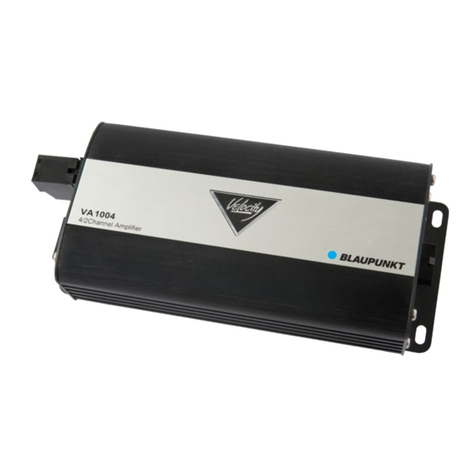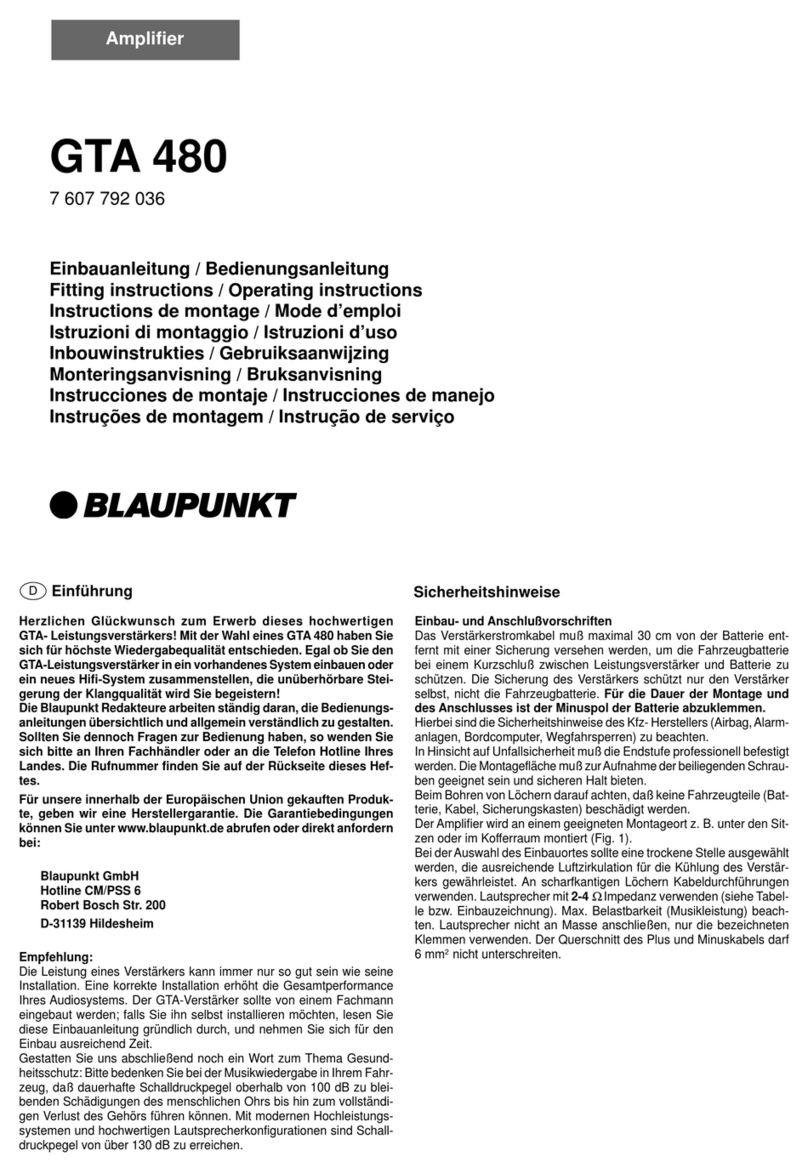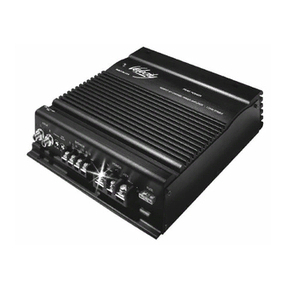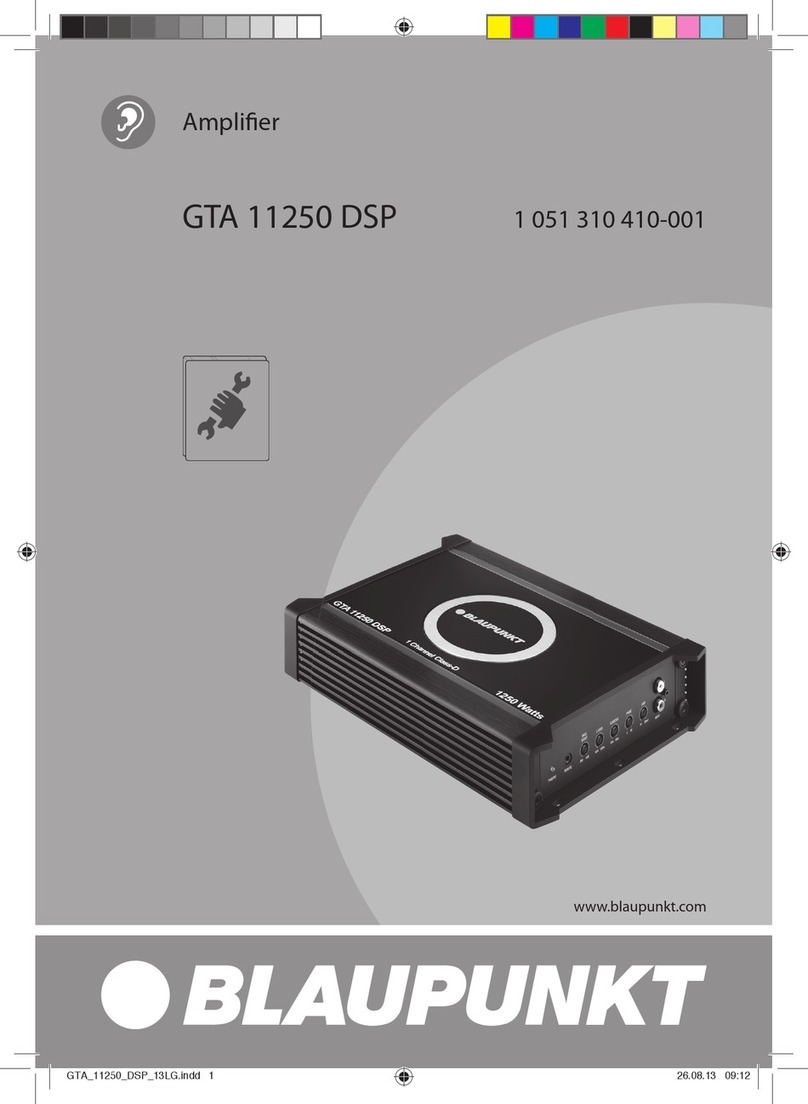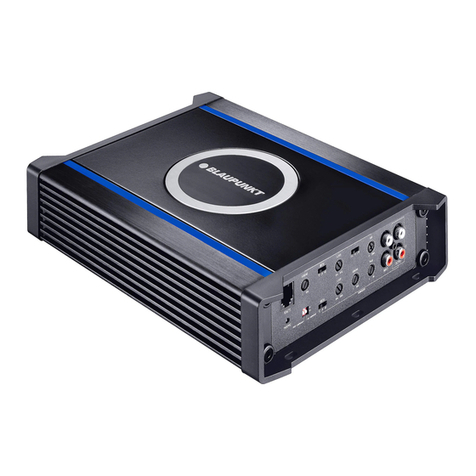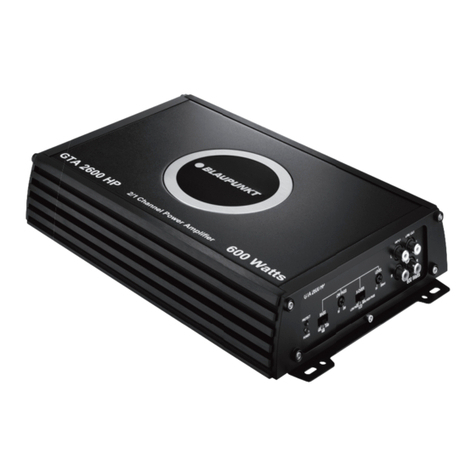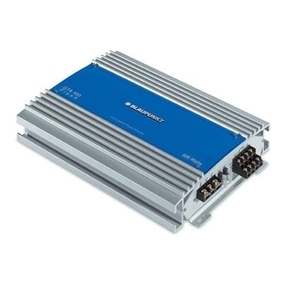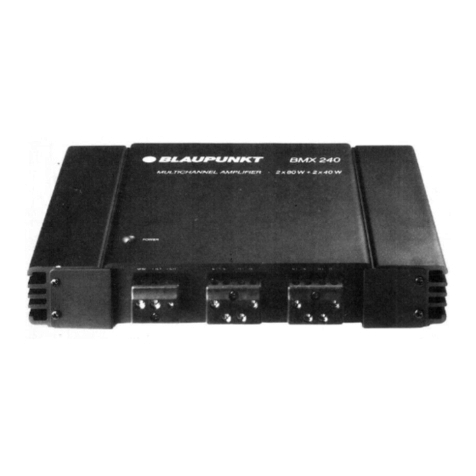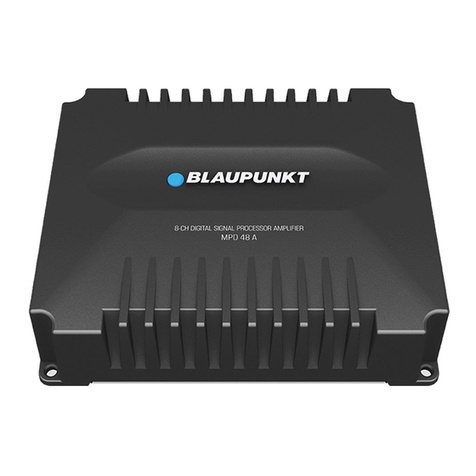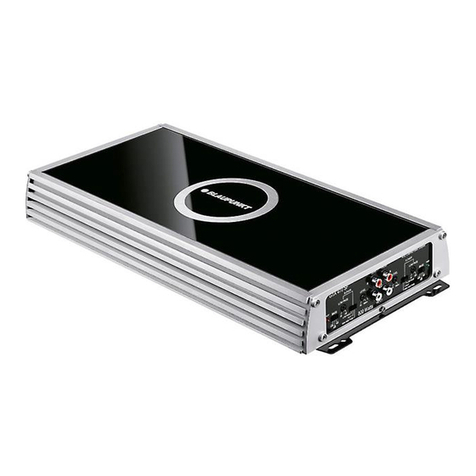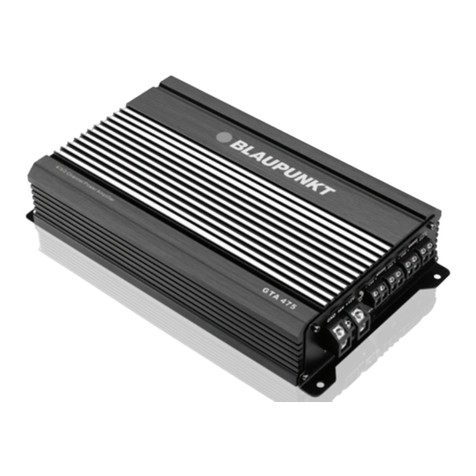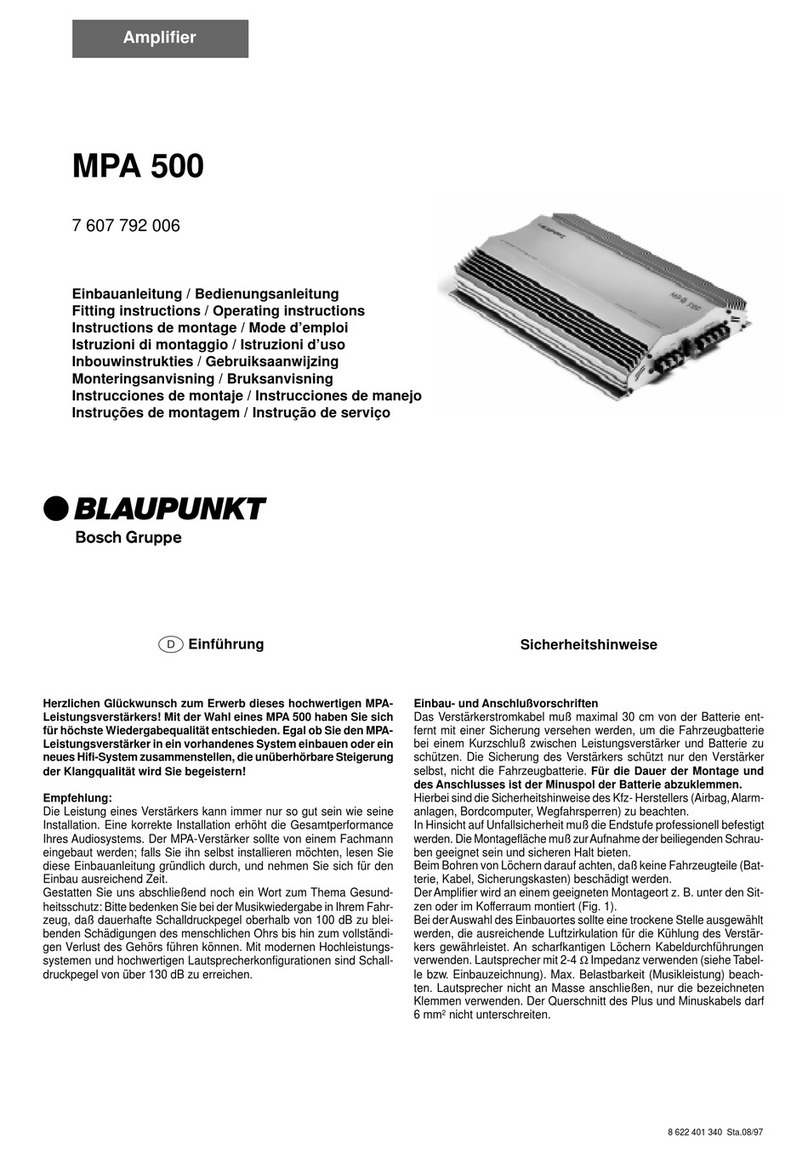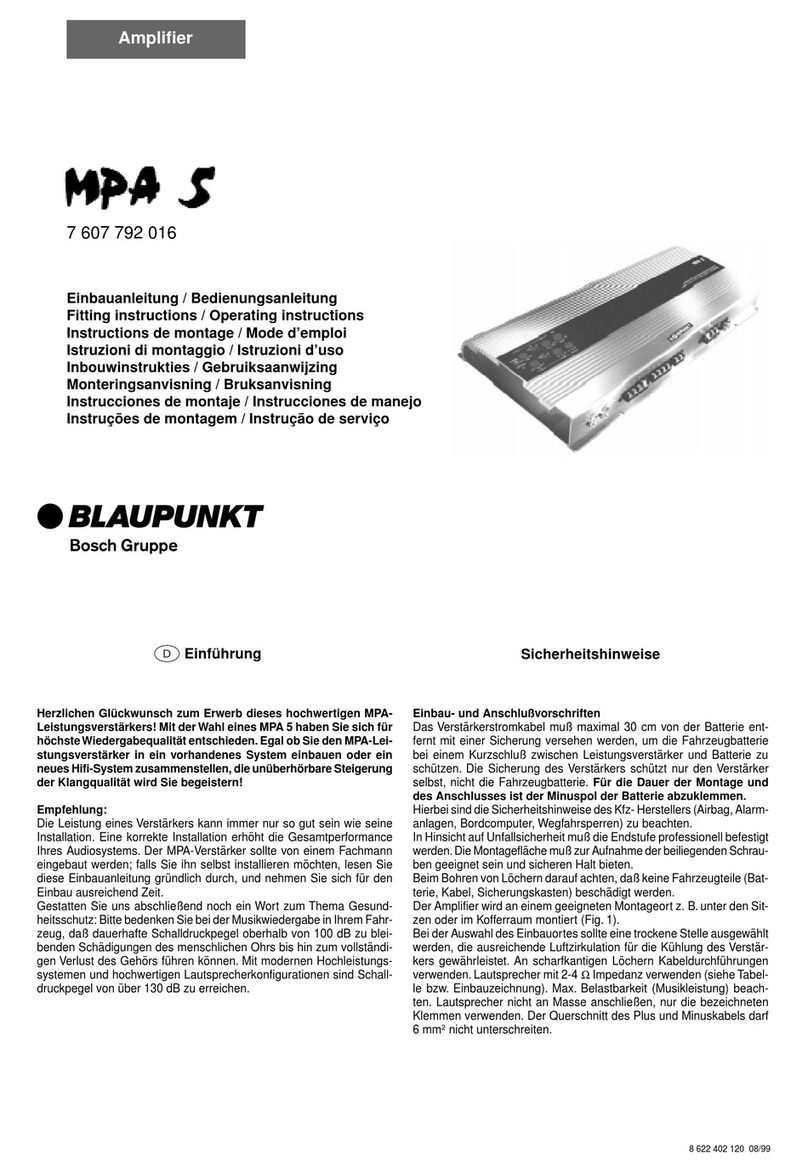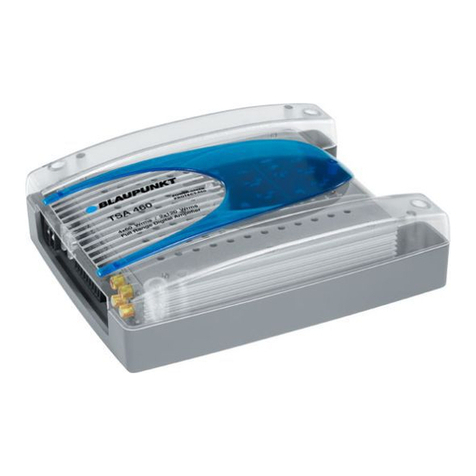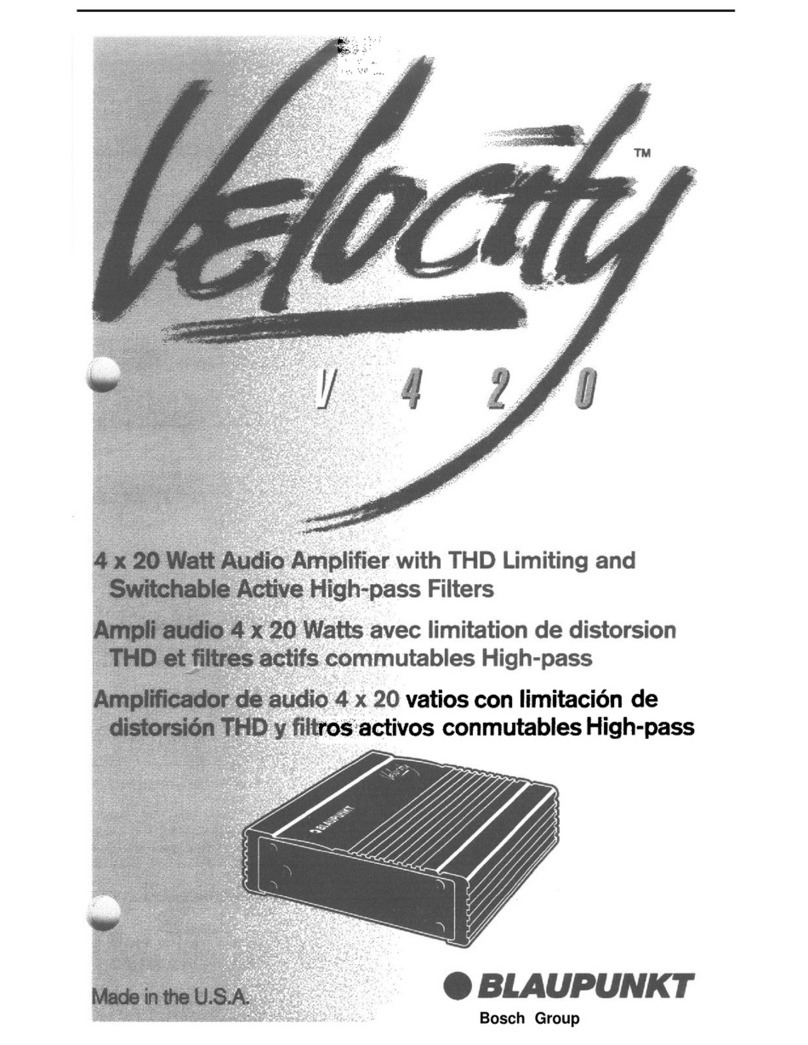
SAFETY
CONCERNS
We
always recommend you have your Blaupunkt amplifiers professionally installed
but the installation process
is
often so easy that the average consumer can
achieve success with little trouble. Regardless of the person installing, you should
be sure
to
review the following points before proceeding with the installation:
•READ THE MANUAL! Understanding the product and installation limitations
before lifting ascrewdriver.
•WEAR
SAFElY
GLASSES
AT
ALL TIMES -Flying debris are always dangerous.
•PROTECT THE VEHICLE -Always disconnect the negative battery cable before
starting any kind
of
installation work. This prevents apossible high current
electrical short (potential fires).
•
HEAT
-Keep
all
audio components away from nearby hot vehicle components that heat up over time such
as hoses, high current wires, and braking system components.
•GIVE YOURSELF LOTS OF TIME -Rushing
to
complete
an
installation nearly always ends up with
problems.
•
DO
NOT LISTEN
AT
HIGH SOUND LEVELS
FOR
APROLONGED TIME -these amplifiers, used with high
efficiency speakers from ANY manufacturer, have the potential
to
cause permanent hearing loss after
listening at maximum volume levels for several hours.
INSTALLATION
WARNINGS!
Before disassembling your beautiful new car you need some basic installation knowledge and skill with
common hand and power tools. Following such basic installation tips and warnings will prevent possible
damage
to
the vehicle and also prevent possible fires.
•AGAIN
...
READ THE MANUAL! There
is
alot
of
helpful information
in
this manual that
will save time and prevent problems later.
•COVER THE VEHICLE WORK AREAS -Use fender covers
or
blankets to protect the
work areas from scratches or dings.
•DISCONNECT THE
(-)
LEAD ON THE BATIERY -No sparks or fires please!
•"REVIEW" THE INSTALLATION -Before using any tools
or
moving vehicle
components, take five minutes to review the installation intentions (e.g., verify that
an
amplifier will fit
in
an area
of
acar before tearing out
all
the interior).
•"REVIEW" THE VEHICLE -Before drilling any holes or cutting into any surfaces, make
sure there are no fuel or hydraulic lines behind the surfaces. Also make sure there are
no wires routed directly behind or near the desired mounting area (remember
...
screws
can often extend 1-2 inches behind the mounting surface).
•ENSURE PROPER FIT -Before cutting or drilling, make sure the amplifier will
physically fit
in
its desired location. Check for clearance around rear deck torsion bars
or
other structural elements.
•
EVERY
CAR
IS
ASSEMBLED DIFFERENT -Every auto manufacturer uses different
assembly techniques.
Take
care
in
removing/modifying all trim panels and mounting
surfaces since they often use unique screws or snap fasteners that are difficult to replace if they are lost or
broken.
•BE CAREFUL WITH CABLE ROUTING -When routing audio cables, make sure RCA and speaker wires are
routed away from high current power lines for audio amplifiers and vehicle systems lines when possible.
This will help prevent noises from creeping into the audio system, plus prevent potential damage
to
the
vehicle wiring itself.
•BE CAREFUL WITH ALL CONNECTIONS -When making connections, make sure each connection
is
clean
and properly secured. Observe all polarity markings carefully to ensure proper end performance.
•CAUTION -FUEL TANKS AND FUEL LINES ARE NOW LOCATED DIRECTLY BENEATH THE
REAR
DECK
IN
MANY CARS -CHECK
FOR
ADEQUATE CLEARANCE BEFORE
EVEN
CONSIDERING SUCH A
MOUNTING LOCATION!
-4-



